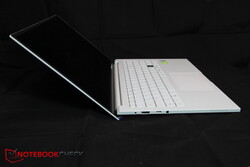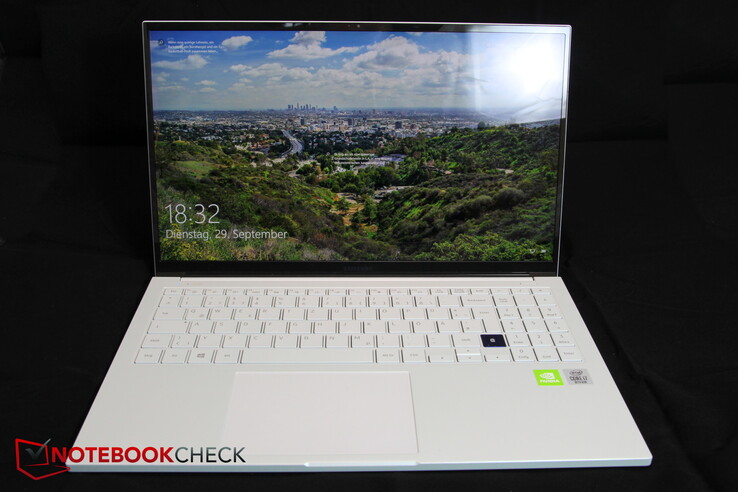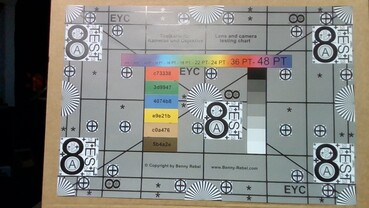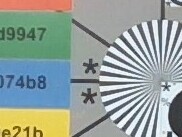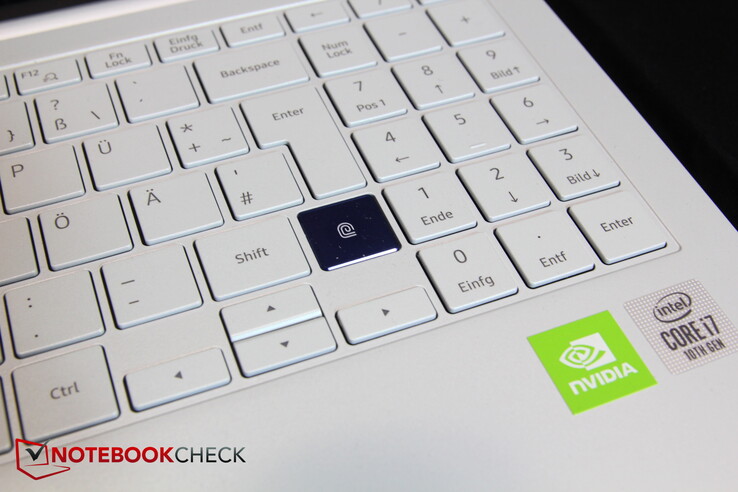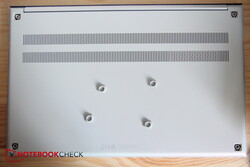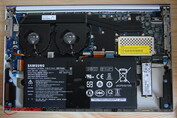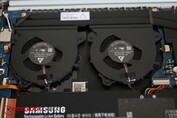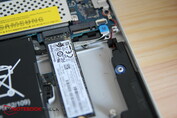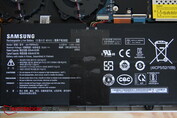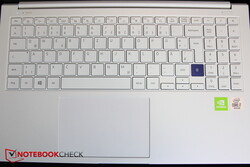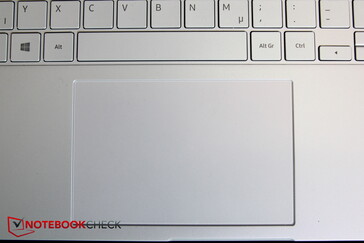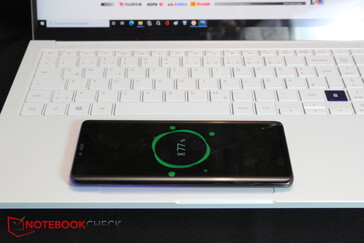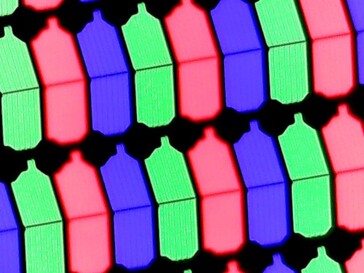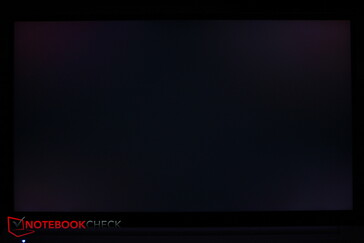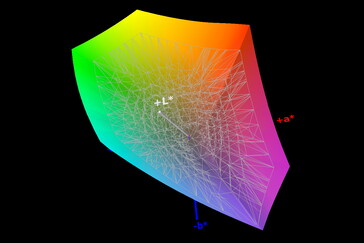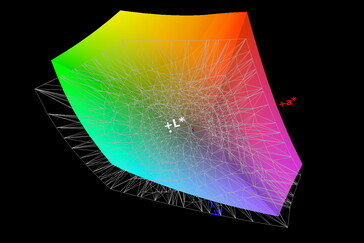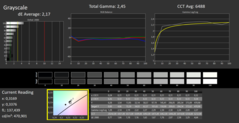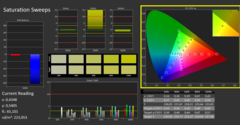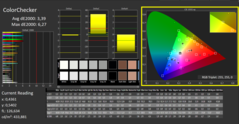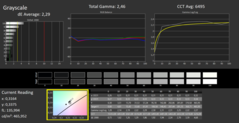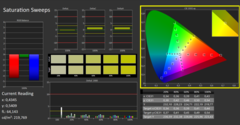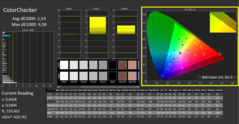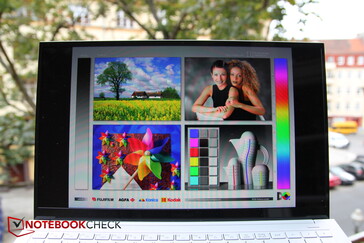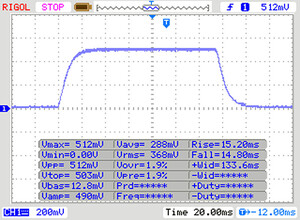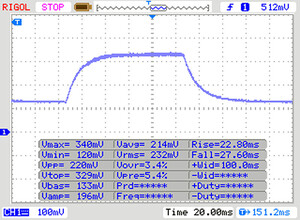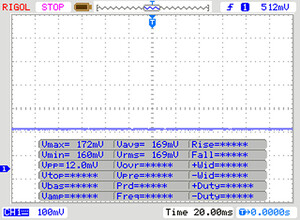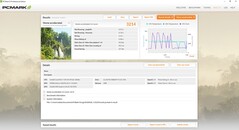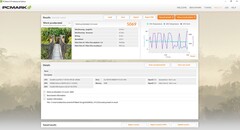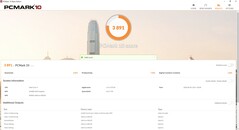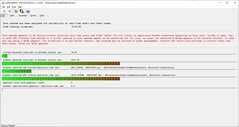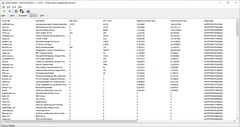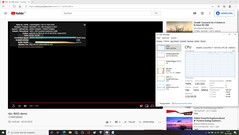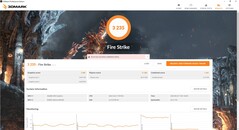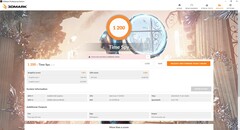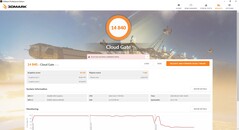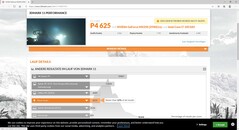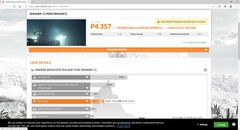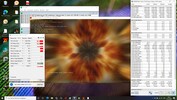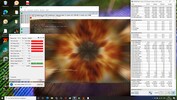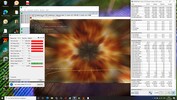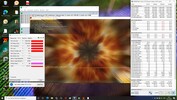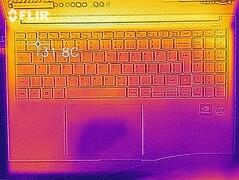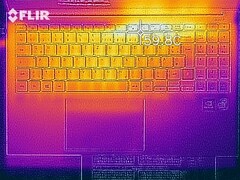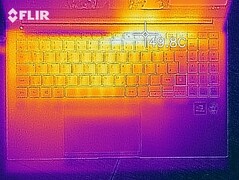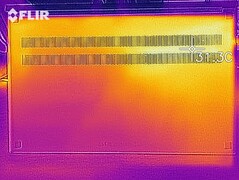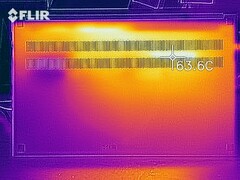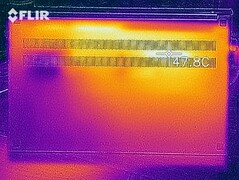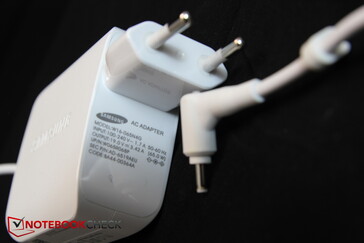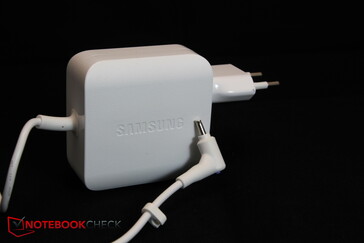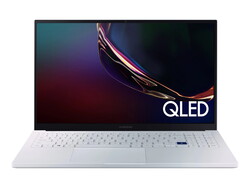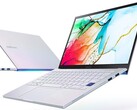Samsung Galaxy Book Ion Aura Silver Laptop Review: Great 15-inch Ultrabook with driver issues

We already reviewed the 13-inch version of the new Galaxy Book Ion series in July. The smaller model had to take a fair amount of criticism for its loud cooling system. Today, we want to find out whether the larger device does a better job at keeping the cooling fans in check.
The Galaxy Book Ion is Samsung's response to the LG Gram. The Ion is only minimally heavier, but even features the dedicated GeForce MX250 (optional) in its 15-inch model. Samsung has also tried to score points with its QLED display and the device's fancy design. The touchpad's QI support is a very unique feature - it means that you can charge your smartphone ( if it supports Qi) simply by laying it onto the touchpad.
We will find out whether this is enough to beat the LG Gram 15 in our direct comparison. As there aren't a lot of ultra-thin light-weight 15-inch notebooks around, we will also be comparing our test unit with the 13-inch version and with the Huawei MateBook D 15, equipped with AMD hardware, as well as the Acer Swift 5 SF515-51T, equipped with an older Whisky Lake CPU.
Rating | Date | Model | Weight | Height | Size | Resolution | Price |
|---|---|---|---|---|---|---|---|
| 81.7 % v7 (old) | 10 / 2020 | Samsung Galaxy Book Ion Aura Silver i7-10510U, GeForce MX250 | 1.3 kg | 15 mm | 15.60" | 1920x1080 | |
| 83.8 % v7 (old) | 07 / 2020 | Samsung Galaxy Book Ion 13.3 i5-10210U, UHD Graphics 620 | 970 g | 12.9 mm | 13.30" | 1920x1080 | |
| 84.8 % v7 (old) | 07 / 2020 | LG Gram 15Z90N i5-1035G7, Iris Plus Graphics G7 (Ice Lake 64 EU) | 1.1 kg | 16.8 mm | 15.60" | 1920x1080 | |
| 85.2 % v7 (old) | 03 / 2020 | Huawei MateBook D 15-53010TUY R5 3500U, Vega 8 | 1.5 kg | 16.9 mm | 15.60" | 1920x1080 | |
| 87.1 % v6 (old) | 02 / 2019 | Acer Swift 5 SF515-51T-76B6 i7-8565U, UHD Graphics 620 | 999 g | 15.9 mm | 15.60" | 1920x1080 |
Case - thin case, thin materials
Except for its bezels the Galaxy Book Ion is almost entirely made of silver-gray magnesium, which is how it can weigh so little. However, the material is so thin that the base unit can easily be compressed. The design itself is attractive - with one possible exception. The blue plastic runner on the back could either be considered fancy or cheap. We can't quite decide.
The workmanship appears to be of high quality with no large gaps anywhere. The long hinge enables an opening angle of around 140 degrees. However, the hinge becomes looser as the angle widens. This could still do with improvement. The bezels are very narrow but still manage to contain a webcam with two microphones along the top. Air is sucked in from below and then blown out onto the display via the hinge.
The dimensions of the Ion and the Gram are very similar. The former is actually a little thinner and less wide, but deeper instead. It weighs 150 to 200 grams more than the Gram, which is probably due to the dedicated GPU. The similarly sized Swift 5 has an iGPU and weighs another 100 grams less while the MateBook weighs 200 grams more despite its iGPU. The Ion configuration with an integrated GPU probably weighs about the same as its two main competitors. In general, it's a very light 15-inch device.
Connectivity - no LAN but Thunderbolt instead
Despite its larger dimensions the Ion 15 inch does not offer a wider port selection than its little 13-inch brother. While the selection is not particularly diverse, the most important ports are there. The USB C port supports Thunderbolt 3. Apart from that the only thing noteworthy is the microSD card reader which can only be opened with the help of a SIM tool. Users have to do without a LAN connection (there is no adapter either) and we would have been pleased to have a fourth USB port.
The few ports are well positioned towards the back of the device with sufficient space on either side. This means that they shouldn't get in the way of a physical mouse.
SD card reader
As many subnotebooks (Swift 5, MateBook) don't even include an SD card reader, we are very pleased that it is there. However, the fact that you need a SIM tool to open the microSD slot kind of dampens the pleasure. The reader is just as fast as that of the LG Gram and corresponds to the industry average.
| SD Card Reader | |
| average JPG Copy Test (av. of 3 runs) | |
| LG Gram 15Z90N (Toshiba Exceria Pro M501 microSDXC 64GB) | |
| Samsung Galaxy Book Ion Aura Silver (Toshiba Exceria Pro M501 microSDXC 64GB) | |
| Average of class Subnotebook (18.4 - 142, n=14, last 2 years) | |
| maximum AS SSD Seq Read Test (1GB) | |
| Samsung Galaxy Book Ion Aura Silver (Toshiba Exceria Pro M501 microSDXC 64GB) | |
| LG Gram 15Z90N (Toshiba Exceria Pro M501 microSDXC 64GB) | |
| Average of class Subnotebook (22.5 - 207, n=14, last 2 years) | |
Communication
The Ion positions itself on top in our Wi-Fi ranking and is a little faster than we would have expected from its Intel AX201 module with WiFi 6. It is faster than the LG Gram by 38 to 62 percent.
Webcam
The 720p webcam is positioned along the top display bezel. Unfortunately, the famous smartphone manufacturer has missed out on their chance to put their expertise to good use and create a new unique selling point. Instead, we just get the usual average laptop webcam with a slight blue cast.
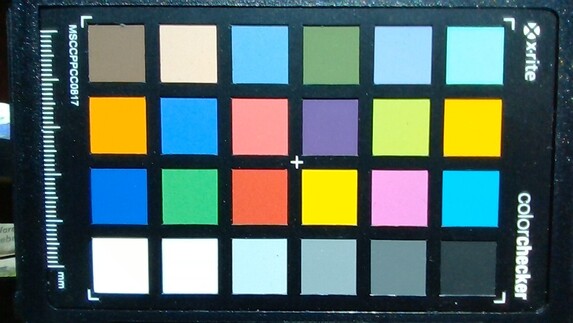
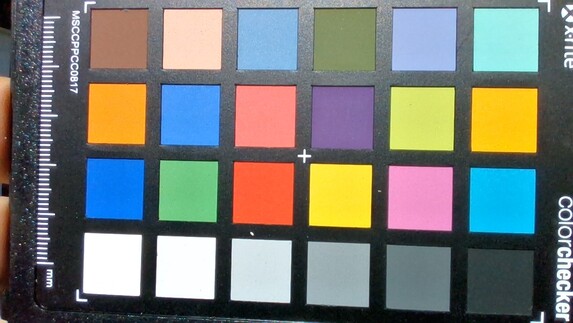
Security
Accessories
The package contains the essential: the laptop, an AC adapter and the SIM tool that is needed to open the SD slot. We would have appreciated a USB-to-LAN adapter at the very least.
Maintenance
At first glance it doesn't look like you can open the Ion. However, we then found a screw beneath each of the four rubber feet. Lifting the cover off the base unit after removing the screws isn't easy and the thin metal bends worryingly in some areas, plus there is a narrow adhesive strip on the inside towards the back that makes opening the device even more difficult. Once that is done, you have access to the dual fans, the two M.2 2280 storage slots (one of them is free) and - in theory - the RAM module. Getting to the latter requires removing the battery first.
Warranty
According to the Samsung homepage, the manufacturer offers 12 months warranty for this device. This can be extended and expanded to include accident protection for an additional charge.
Input Devices - good keyboard layout, average feedback
Keyboard
The main keys are nicely sized (16.5 mm) and the lettering is easy to read. The single-color three-tier backlighting helps read the keyboard in dark surroundings. There's a number pad with slightly smaller keys on the right side of the main keyboard. The layout is clear and orderly. Unfortunately, the arrow keys are significantly smaller and the enter key is unusually narrow - all that in order to make space for the number pad. The Pos 1 and End keys are second functions on the number pad and only work when this is deactivated.
Typing takes a little getting used to as the keys have a fairly soft travel for an Ultrabook and also lack feedback, which is too soft and imprecise. The noise from typing is rather low due to these soft keys. The power button is not integrated into the main keyboard area, luckily enough, but sits above them in the top right corner.
Touchpad
The touchpad is well dimensioned at 12.15 x 7.9 cm and also offers good gliding capabilities, even during slow movements. The integrated mouse buttons offer good feedback, but aren't as quiet as the keyboard keys.
The clickpad features a unique selling point. It lets users recharge their smartphones and other devices that support wireless Qi charging. All you need to do is place your smartphone on the touchpad and hit fn + F11 and the phone will be wirelessly charged via the laptop.
Display - colorful FullHD QLED panel
Samsung has chosen a reflective FullHD QLED panel from BOE (BOE0889) for its Galaxy Book Ion. The panel offers an average brightness of 437 cd/m², which is very good and easily beats the competition including the LG Gram (342 cd/m²). The brightness distribution is very good and even at 91 percent. Thanks to the reflective display, screen content is very sharp and clear. The manufacturer does not offer any alternatives such as 4K options, higher refresh rates or touchscreens for this series.
We did not perceive any backlight bleeding on our test unit.
| |||||||||||||||||||||||||
Brightness Distribution: 91 %
Center on Battery: 399 cd/m²
Contrast: 1730:1 (Black: 0.27 cd/m²)
ΔE ColorChecker Calman: 3.39 | ∀{0.5-29.43 Ø4.78}
ΔE Greyscale Calman: 2.17 | ∀{0.09-98 Ø5}
100% sRGB (Argyll 1.6.3 3D)
78% AdobeRGB 1998 (Argyll 1.6.3 3D)
87.3% AdobeRGB 1998 (Argyll 3D)
99.9% sRGB (Argyll 3D)
99.1% Display P3 (Argyll 3D)
Gamma: 2.45
CCT: 6488 K
| Samsung Galaxy Book Ion Aura Silver BOE0889, QLED, 1920x1080, 15.6" | LG Gram 15Z90N LP156WF9-SPN1, .2 IPS LED, 1920x1080, 15.6" | Huawei MateBook D 15-53010TUY AU Optronics AUO28ED, IPS, 1920x1080, 15.6" | Acer Swift 5 SF515-51T-76B6 LG Philips LP156WFA-SPG2, IPS, 1920x1080, 15.6" | Samsung Galaxy Book Ion 13.3 BOE087A, IPS (QLED), 1920x1080, 13.3" | |
|---|---|---|---|---|---|
| Display | -20% | -50% | -19% | ||
| Display P3 Coverage (%) | 99.1 | 66 -33% | 40.49 -59% | 66.8 -33% | |
| sRGB Coverage (%) | 99.9 | 96.4 -4% | 60.9 -39% | 98 -2% | |
| AdobeRGB 1998 Coverage (%) | 87.3 | 66.8 -23% | 41.84 -52% | 67.8 -22% | |
| Response Times | 26% | 2% | 18% | 2% | |
| Response Time Grey 50% / Grey 80% * (ms) | 49 ? | 36 ? 27% | 43.6 ? 11% | 38 ? 22% | 47 ? 4% |
| Response Time Black / White * (ms) | 29 ? | 22 ? 24% | 31.2 ? -8% | 25 ? 14% | 29 ? -0% |
| PWM Frequency (Hz) | |||||
| Screen | -8% | -36% | -6% | -19% | |
| Brightness middle (cd/m²) | 467 | 366 -22% | 271 -42% | 341 -27% | 467 0% |
| Brightness (cd/m²) | 437 | 342 -22% | 256 -41% | 319 -27% | 437 0% |
| Brightness Distribution (%) | 91 | 88 -3% | 90 -1% | 87 -4% | 88 -3% |
| Black Level * (cd/m²) | 0.27 | 0.28 -4% | 0.15 44% | 0.31 -15% | 0.29 -7% |
| Contrast (:1) | 1730 | 1307 -24% | 1807 4% | 1100 -36% | 1610 -7% |
| Colorchecker dE 2000 * | 3.39 | 2.68 21% | 4.7 -39% | 2.01 41% | 4.73 -40% |
| Colorchecker dE 2000 max. * | 6.27 | 5.25 16% | 20.4 -225% | 4.74 24% | 6.07 3% |
| Greyscale dE 2000 * | 2.17 | 2.4 -11% | 1.6 26% | 2.01 7% | 4.33 -100% |
| Gamma | 2.45 90% | 2.25 98% | 2.17 101% | 2.52 87% | 2.34 94% |
| CCT | 6488 100% | 6474 100% | 6649 98% | 6704 97% | 6954 93% |
| Color Space (Percent of AdobeRGB 1998) (%) | 78 | 61 -22% | 38.5 -51% | 63 -19% | |
| Color Space (Percent of sRGB) (%) | 100 | 96 -4% | 60.6 -39% | 98 -2% | |
| Colorchecker dE 2000 calibrated * | 1.08 | 4.6 | 1.11 | ||
| Total Average (Program / Settings) | -1% /
-6% | -28% /
-34% | -2% /
-5% | -9% /
-15% |
* ... smaller is better
The contrast ratio is very good at 1730:1 (only the MateBook does slightly better) despite the black value being rather average. The latter is compensated by the panel's full sRGB coverage and 78 percent coverage of the AdobeRGB color space. None of the competitors can offer similar values. This makes the laptop potentially interesting for people working in the creative industry. The calibration is acceptable ex-works, although there is still room for improvement.
Display Response Times
| ↔ Response Time Black to White | ||
|---|---|---|
| 29 ms ... rise ↗ and fall ↘ combined | ↗ 15 ms rise | |
| ↘ 14 ms fall | ||
| The screen shows relatively slow response rates in our tests and may be too slow for gamers. In comparison, all tested devices range from 0.1 (minimum) to 240 (maximum) ms. » 76 % of all devices are better. This means that the measured response time is worse than the average of all tested devices (20.2 ms). | ||
| ↔ Response Time 50% Grey to 80% Grey | ||
| 49 ms ... rise ↗ and fall ↘ combined | ↗ 22 ms rise | |
| ↘ 27 ms fall | ||
| The screen shows slow response rates in our tests and will be unsatisfactory for gamers. In comparison, all tested devices range from 0.165 (minimum) to 636 (maximum) ms. » 84 % of all devices are better. This means that the measured response time is worse than the average of all tested devices (31.6 ms). | ||
Screen Flickering / PWM (Pulse-Width Modulation)
| Screen flickering / PWM not detected | |||
In comparison: 53 % of all tested devices do not use PWM to dim the display. If PWM was detected, an average of 8108 (minimum: 5 - maximum: 343500) Hz was measured. | |||
Performance - Good performance, big latency issues
The Galaxy Book Ion is equipped with a GeForce MX250, the energy-efficient Intel Core i7-10510U with 4 cores and 8 threads, 16 GB of RAM and an SSD with 500 GB capacity. This makes it a real all-rounder, suitable for content creators and business users alike. Particularly the dedicated GPU is a great feature for an Ultrabook to have. We ran all benchmarks in the Samsung performance mode for the best results.
Processor
The Intel Core i7-10510U is an efficient quad-core 10th generation Intel chip (Comet Lake). Its clock rate is very flexible and ranges from 1.8 to 4.9 GHz. Performance therefore offers a similarly wide range of possibilities that depend on the effectiveness of the cooling system and on the manufacturer's specifications.
Our CineBench R15 loop positions the Ion on the top of our comparison list - it is equipped with the nominally fastest CPU, after all. The LG Gram that we tested was only equipped with a Core i5 with lower clock rates. Our Galaxy Book Ion takes a 20 - 30 percent lead in multi-thread performance while the MateBook, equipped with a Ryzen 3500U has similar results as the Ion. The Ion's performance only drops by about 5 percent over time, although its performance and clock rates fluctuate strongly. This indicates that the system continues to adjust the core speed depending on the current temperature, which seems to fluctuate just as quickly in this thin case. Overall, the processor's results are where we expected them to be.
Performance is hardly impacted on battery with the difference probably coming down to measurement uncertainty that could also be connected to the missing performance mode.
Cinebench R15: CPU Single 64Bit | CPU Multi 64Bit
Blender: v2.79 BMW27 CPU
7-Zip 18.03: 7z b 4 -mmt1 | 7z b 4
Geekbench 5.5: Single-Core | Multi-Core
HWBOT x265 Benchmark v2.2: 4k Preset
LibreOffice : 20 Documents To PDF
R Benchmark 2.5: Overall mean
| Cinebench R20 / CPU (Single Core) | |
| Average of class Subnotebook (128 - 826, n=70, last 2 years) | |
| Samsung Galaxy Book Ion Aura Silver | |
| Average Intel Core i7-10510U (362 - 497, n=37) | |
| Samsung Galaxy Book Ion 13.3 | |
| LG Gram 15Z90N | |
| Huawei MateBook D 15-53010TUY | |
| Cinebench R20 / CPU (Multi Core) | |
| Average of class Subnotebook (579 - 8541, n=70, last 2 years) | |
| Samsung Galaxy Book Ion Aura Silver | |
| Huawei MateBook D 15-53010TUY | |
| Average Intel Core i7-10510U (1015 - 1897, n=38) | |
| Samsung Galaxy Book Ion 13.3 | |
| LG Gram 15Z90N | |
| Cinebench R15 / CPU Single 64Bit | |
| Average of class Subnotebook (72.4 - 322, n=70, last 2 years) | |
| Samsung Galaxy Book Ion Aura Silver | |
| Average Intel Core i7-10510U (113 - 202, n=42) | |
| Acer Swift 5 SF515-51T-76B6 | |
| Samsung Galaxy Book Ion 13.3 | |
| LG Gram 15Z90N | |
| Huawei MateBook D 15-53010TUY | |
| Cinebench R15 / CPU Multi 64Bit | |
| Average of class Subnotebook (327 - 3345, n=70, last 2 years) | |
| Samsung Galaxy Book Ion Aura Silver | |
| Huawei MateBook D 15-53010TUY | |
| Average Intel Core i7-10510U (482 - 856, n=45) | |
| Acer Swift 5 SF515-51T-76B6 | |
| LG Gram 15Z90N | |
| Samsung Galaxy Book Ion 13.3 | |
| Blender / v2.79 BMW27 CPU | |
| LG Gram 15Z90N | |
| Samsung Galaxy Book Ion 13.3 | |
| Average Intel Core i7-10510U (628 - 1051, n=31) | |
| Huawei MateBook D 15-53010TUY | |
| Samsung Galaxy Book Ion Aura Silver | |
| Average of class Subnotebook (159 - 2271, n=73, last 2 years) | |
| 7-Zip 18.03 / 7z b 4 -mmt1 | |
| Average of class Subnotebook (2643 - 6442, n=72, last 2 years) | |
| Samsung Galaxy Book Ion Aura Silver | |
| Average Intel Core i7-10510U (3747 - 4981, n=31) | |
| Samsung Galaxy Book Ion 13.3 | |
| LG Gram 15Z90N | |
| Huawei MateBook D 15-53010TUY | |
| 7-Zip 18.03 / 7z b 4 | |
| Average of class Subnotebook (11668 - 77867, n=70, last 2 years) | |
| Samsung Galaxy Book Ion Aura Silver | |
| Average Intel Core i7-10510U (12196 - 21298, n=31) | |
| Huawei MateBook D 15-53010TUY | |
| Samsung Galaxy Book Ion 13.3 | |
| LG Gram 15Z90N | |
| Geekbench 5.5 / Single-Core | |
| Average of class Subnotebook (726 - 2350, n=65, last 2 years) | |
| Samsung Galaxy Book Ion Aura Silver | |
| Average Intel Core i7-10510U (977 - 1287, n=31) | |
| LG Gram 15Z90N | |
| Samsung Galaxy Book Ion 13.3 | |
| Huawei MateBook D 15-53010TUY | |
| Geekbench 5.5 / Multi-Core | |
| Average of class Subnotebook (2557 - 17218, n=65, last 2 years) | |
| Samsung Galaxy Book Ion 13.3 | |
| Average Intel Core i7-10510U (2474 - 4484, n=31) | |
| Samsung Galaxy Book Ion Aura Silver | |
| Huawei MateBook D 15-53010TUY | |
| LG Gram 15Z90N | |
| HWBOT x265 Benchmark v2.2 / 4k Preset | |
| Average of class Subnotebook (0.97 - 25.1, n=70, last 2 years) | |
| Samsung Galaxy Book Ion Aura Silver | |
| Average Intel Core i7-10510U (3.41 - 6.04, n=31) | |
| Huawei MateBook D 15-53010TUY | |
| Samsung Galaxy Book Ion 13.3 | |
| LibreOffice / 20 Documents To PDF | |
| Samsung Galaxy Book Ion Aura Silver | |
| Average Intel Core i7-10510U (50.7 - 77.8, n=27) | |
| Average of class Subnotebook (38.5 - 220, n=69, last 2 years) | |
| Samsung Galaxy Book Ion 13.3 | |
| LG Gram 15Z90N | |
| R Benchmark 2.5 / Overall mean | |
| LG Gram 15Z90N | |
| Huawei MateBook D 15-53010TUY | |
| Samsung Galaxy Book Ion 13.3 | |
| Average Intel Core i7-10510U (0.637 - 0.81, n=28) | |
| Samsung Galaxy Book Ion Aura Silver | |
| Average of class Subnotebook (0.403 - 1.456, n=71, last 2 years) | |
* ... smaller is better
System Performance
The Ion's system performance is slightly below average. It is about 4 - 14 percent slower compared to other notebooks with the same CPU/GPU combination. While everything runs smoothly in everyday use, we did have some issues with strong latencies and unusually high CPU utilization. You can read more about that in our section on latencies.
| PCMark 8 Home Score Accelerated v2 | 3214 points | |
| PCMark 8 Work Score Accelerated v2 | 5069 points | |
| PCMark 10 Score | 3891 points | |
Help | ||
DPC latencies
The Ion seems to have some difficulties when it comes to latencies. Even just opening several browser tabs leads to first driver latencies. Usually, our YouTube test runs smoothly nonetheless. This is not the case for the Galaxy Book: The CPU was maxed out at 100 percent when displaying a 4K/60fps video, according to the task manager, with 883 dropped frames. Apparently the CPU is not supported by the GeForce chip when displaying videos. We ran the test in the Edge browser from Microsoft in its standard settings. Activating performance mode did not offer any improvements. The issue is mainly connected to the Kernel Mode Driver Framework Runtime process. The 13-inch model did not seem to have these problems, which means it might be an individual issue of our test model.
| DPC Latencies / LatencyMon - interrupt to process latency (max), Web, Youtube, Prime95 | |
| Samsung Galaxy Book Ion Aura Silver | |
* ... smaller is better
Storage Device
The included SSD from Western Digital has a capacity of 500 GB and is positioned on rank 77 in our list of top SSD/HDD storage devices. It reaches fairly good results compared to its competition and seems to offer the best overall performance. Only the access times while reading are unusually high and somewhat cloud the very good transfer rates.
Dauerleistung Lesen: DiskSpd Read Loop, Queue Depth 8
Graphics
The Ion is equipped with two GPU options. The integrated, fairly slow Intel UHD Graphics 620 and the dedicated Nvidia Geforce MX250. Games are displayed smoothly using the latter, although you will want to stick to minimum settings. The chip is ideal for streaming 4K videos as well as for editing photos and videos, but rather less so for gaming. Alternatively, users can also purchase the configuration without a dedicated graphics card.
The 3DMark test results of the MX250 fulfil our expectations, which means that its performance is 30 - 60 percent better than that of the LG Gram. The MateBook with its Vega 8 GPU from the last Ryzen generation (Zen 2 offers a better performance) lags behind by 10 - 30 percent.
The Samsung performance mode cannot be activated on battery. This represents a slight loss in performance of 6 percent according to 3DMark 11, which is not too noticeable.
| 3DMark 11 Performance | 4625 points | |
| 3DMark Cloud Gate Standard Score | 14840 points | |
| 3DMark Fire Strike Score | 3235 points | |
| 3DMark Time Spy Score | 1200 points | |
Help | ||
Gaming Performance
More demanding games such as Witcher 3, Far Cry 5 or Battlefield 5 can be played - but only at the absolutely lowest resolution and graphics details. Anything above that is no longer displayed smoothly. Less demanding titles such as DOTA 2 or Rocket League can even reach FullHD resolution, if only with reductions in terms of details. Occasional gamers might be quite pleased with what the device has to offer. If Samsung's performance mode is deactivated, the device loses around 13 percent of performance.
Of course the Ion has a clear advantage over the LG Gram, which is only equipped with an integrated graphics chip and therefore is slower by 60 - 70 percent while gaming. The Ion is the obvious winner in terms of graphics, which also makes it suitable for creative applications (3D, editing, etc.).
| The Witcher 3 | |
| 1024x768 Low Graphics & Postprocessing | |
| Average of class Subnotebook (49.9 - 187, n=28, last 2 years) | |
| Average NVIDIA GeForce MX250 (47.4 - 70, n=24) | |
| Samsung Galaxy Book Ion Aura Silver | |
| Acer Swift 5 SF515-51T-76B6 | |
| Samsung Galaxy Book Ion 13.3 | |
| 1366x768 Medium Graphics & Postprocessing | |
| Average of class Subnotebook (33.4 - 118, n=20, last 2 years) | |
| Average NVIDIA GeForce MX250 (30 - 40, n=27) | |
| Samsung Galaxy Book Ion Aura Silver | |
| Acer Swift 5 SF515-51T-76B6 | |
| 1920x1080 High Graphics & Postprocessing (Nvidia HairWorks Off) | |
| Average of class Subnotebook (11.2 - 71, n=30, last 2 years) | |
| Average NVIDIA GeForce MX250 (16.3 - 23.1, n=27) | |
| Samsung Galaxy Book Ion Aura Silver | |
| Acer Swift 5 SF515-51T-76B6 | |
| 1920x1080 Ultra Graphics & Postprocessing (HBAO+) | |
| Average of class Subnotebook (8.5 - 43.7, n=31, last 2 years) | |
| Average NVIDIA GeForce MX250 (9 - 16, n=24) | |
| Samsung Galaxy Book Ion Aura Silver | |
| Acer Swift 5 SF515-51T-76B6 | |
| low | med. | high | ultra | |
|---|---|---|---|---|
| GTA V (2015) | 123.9 | 96.7 | 38.4 | 18.6 |
| The Witcher 3 (2015) | 55.4 | 30 | 18 | 10.5 |
| Dota 2 Reborn (2015) | 115.3 | 92 | 64 | 57 |
| X-Plane 11.11 (2018) | 60.1 | 48.2 | 44.4 | |
| Far Cry 5 (2018) | 45 | 19 | 18 | 16 |
| Battlefield V (2018) | 40.4 | 24 | 18.6 | 13.8 |
Emissions - comfortable fans in the Galaxy Book Ion
System Noise
The Ion's system noise is impressive particularly when it comes to idle and low loads. The fans often remain turned off in these situations while our comparison devices all already ramp up to 31 dB(A). While the Ion's cooling fans do turn up under high loads, at least the device also has more to offer than its competition thanks to its dedicated GPU. We did not notice any coil whine or similar noises coming from the device. Fan noise is very uniform - even under full load. The fans also slow down very quickly once the device is no longer under load. We would generally describe the cooling system as pleasant, although the fans to tend to turn on for about 2 seconds at a time after being put under load.
Noise level
| Idle |
| 24.9 / 24.9 / 24.9 dB(A) |
| Load |
| 39 / 39.2 dB(A) |
 | ||
30 dB silent 40 dB(A) audible 50 dB(A) loud |
||
min: | ||
| Samsung Galaxy Book Ion Aura Silver GeForce MX250, i7-10510U, WDC PC SN730 SDBQNTY-512GB | Samsung Galaxy Book Ion 13.3 UHD Graphics 620, i5-10210U, Samsung SSD PM981a MZVLB256HBHQ | LG Gram 15Z90N Iris Plus Graphics G7 (Ice Lake 64 EU), i5-1035G7, SK Hynix PC401 512GB M.2 (HFS512GD9TNG) | Huawei MateBook D 15-53010TUY Vega 8, R5 3500U, Samsung SSD PM981 MZVLB256HAHQ | Acer Swift 5 SF515-51T-76B6 UHD Graphics 620, i7-8565U, SK Hynix BC501 HFM512GDJTNG | |
|---|---|---|---|---|---|
| Noise | -10% | -12% | -7% | -11% | |
| off / environment * (dB) | 24.9 | 30.7 -23% | 30.7 -23% | 29.6 -19% | 30.5 -22% |
| Idle Minimum * (dB) | 24.9 | 30.7 -23% | 30.7 -23% | 29.6 -19% | 30.5 -22% |
| Idle Average * (dB) | 24.9 | 30.7 -23% | 30.7 -23% | 29.6 -19% | 30.5 -22% |
| Idle Maximum * (dB) | 24.9 | 30.7 -23% | 31.9 -28% | 29.6 -19% | 30.9 -24% |
| Load Average * (dB) | 39 | 36.6 6% | 34 13% | 30.6 22% | 34.9 11% |
| Witcher 3 ultra * (dB) | 38.9 | 35.8 8% | |||
| Load Maximum * (dB) | 39.2 | 36.3 7% | 34.2 13% | 33.8 14% | 35 11% |
* ... smaller is better
Temperature
Our temperature measurements paint a similar picture. The device remains cool while idling despite the fans being turned off while the thin case heats up a little more under load. The hot spots on the surface are in the middle towards the back (ventilation slots) where we measured up to 50 °C. Fortunately, the wrist rests remain comfortable at all times. This maximum of 50 °C only occurs in real stress situations. Considering that the device only reaches around 35 °C while playing the Witcher 3, the temperature development can really be considered very good. We still would not recommend using the Ion on your lap under high loads as the necessary fresh air is sucked in from the bottom, which means that you could easily accidentally block air supply with your legs.
(-) The maximum temperature on the upper side is 50.1 °C / 122 F, compared to the average of 35.9 °C / 97 F, ranging from 21.4 to 59 °C for the class Subnotebook.
(-) The bottom heats up to a maximum of 50.2 °C / 122 F, compared to the average of 39.3 °C / 103 F
(+) In idle usage, the average temperature for the upper side is 23.9 °C / 75 F, compared to the device average of 30.8 °C / 87 F.
(+) Playing The Witcher 3, the average temperature for the upper side is 30.1 °C / 86 F, compared to the device average of 30.8 °C / 87 F.
(+) The palmrests and touchpad are reaching skin temperature as a maximum (32.2 °C / 90 F) and are therefore not hot.
(-) The average temperature of the palmrest area of similar devices was 28.2 °C / 82.8 F (-4 °C / -7.2 F).
| Samsung Galaxy Book Ion Aura Silver GeForce MX250, i7-10510U, WDC PC SN730 SDBQNTY-512GB | Samsung Galaxy Book Ion 13.3 UHD Graphics 620, i5-10210U, Samsung SSD PM981a MZVLB256HBHQ | LG Gram 15Z90N Iris Plus Graphics G7 (Ice Lake 64 EU), i5-1035G7, SK Hynix PC401 512GB M.2 (HFS512GD9TNG) | Huawei MateBook D 15-53010TUY Vega 8, R5 3500U, Samsung SSD PM981 MZVLB256HAHQ | Acer Swift 5 SF515-51T-76B6 UHD Graphics 620, i7-8565U, SK Hynix BC501 HFM512GDJTNG | |
|---|---|---|---|---|---|
| Heat | 4% | 9% | 7% | 4% | |
| Maximum Upper Side * (°C) | 50.1 | 41.8 17% | 38 24% | 39.3 22% | 44.4 11% |
| Maximum Bottom * (°C) | 50.2 | 43 14% | 38.6 23% | 45.6 9% | 45.7 9% |
| Idle Upper Side * (°C) | 24.8 | 26.6 -7% | 26.5 -7% | 25.2 -2% | 25.4 -2% |
| Idle Bottom * (°C) | 25.5 | 27.2 -7% | 26.5 -4% | 26.1 -2% | 25.8 -1% |
* ... smaller is better
Stress test
The clock rates drop right after the start of our stress test, as soon as the core temperature reaches over 80 °C, which happens almost immediately in this tight case. The clock rate stabilize at around 1.8 GHz (base rate) after less than 5 minutes and stay at that level for the remainder of the one-hour test. However, the temperature does rise from 75 °C to a hot 92 °C during this period. The GPU clock rates remain stable between 1.4 and 1.5 GHz.
Another round of 3DMark 11 directly after the stress test shows no difference in performance, which means that the Samsung laptop recovers quickly.
Speakers
The stereo speakers are positioned near the front along the sides. They cause the wrist rests to vibrate while not reaching a decent volume and lacking in bass. Highs and mids are OK. The speakers sound tinny and too quiet in general. External devices can be connected via HDMI or a combined audio jack for headphones and a microphone.
Samsung Galaxy Book Ion Aura Silver audio analysis
(-) | not very loud speakers (66.9 dB)
Bass 100 - 315 Hz
(-) | nearly no bass - on average 20.2% lower than median
(±) | linearity of bass is average (14.2% delta to prev. frequency)
Mids 400 - 2000 Hz
(+) | balanced mids - only 2.7% away from median
(+) | mids are linear (3.9% delta to prev. frequency)
Highs 2 - 16 kHz
(+) | balanced highs - only 3% away from median
(+) | highs are linear (5% delta to prev. frequency)
Overall 100 - 16.000 Hz
(±) | linearity of overall sound is average (18.5% difference to median)
Compared to same class
» 54% of all tested devices in this class were better, 7% similar, 39% worse
» The best had a delta of 5%, average was 18%, worst was 53%
Compared to all devices tested
» 41% of all tested devices were better, 8% similar, 52% worse
» The best had a delta of 4%, average was 24%, worst was 134%
Apple MacBook 12 (Early 2016) 1.1 GHz audio analysis
(+) | speakers can play relatively loud (83.6 dB)
Bass 100 - 315 Hz
(±) | reduced bass - on average 11.3% lower than median
(±) | linearity of bass is average (14.2% delta to prev. frequency)
Mids 400 - 2000 Hz
(+) | balanced mids - only 2.4% away from median
(+) | mids are linear (5.5% delta to prev. frequency)
Highs 2 - 16 kHz
(+) | balanced highs - only 2% away from median
(+) | highs are linear (4.5% delta to prev. frequency)
Overall 100 - 16.000 Hz
(+) | overall sound is linear (10.2% difference to median)
Compared to same class
» 7% of all tested devices in this class were better, 2% similar, 91% worse
» The best had a delta of 5%, average was 18%, worst was 53%
Compared to all devices tested
» 4% of all tested devices were better, 1% similar, 94% worse
» The best had a delta of 4%, average was 24%, worst was 134%
Energy Management - latency issues mess with battery life while browsing
Power Consumption
Consumption is very efficient while idling and lower than that of the MateBook or the Acer Swift 5. Light browsing and typing does not demand a lot of power. Once the MX250 is turned on under load, consumption increases to more than what our iGPU competitors require but still remains average for laptops that are equipped with an MX250.
The AC adapter is compact with a rated output of 65 Watt. As the maximum consumption we measured was 64 W and this was only temporary, the AC adapter should easily be large enough to cover all charging needs. However, the cable is a little short as the transformer is directly plugs directly into the socket rather being connected to a second cable as is the norm. Then again, this makes the charger more handy.
| Off / Standby | |
| Idle | |
| Load |
|
Key:
min: | |
| Samsung Galaxy Book Ion Aura Silver i7-10510U, GeForce MX250, WDC PC SN730 SDBQNTY-512GB, QLED, 1920x1080, 15.6" | Samsung Galaxy Book Ion 13.3 i5-10210U, UHD Graphics 620, Samsung SSD PM981a MZVLB256HBHQ, IPS (QLED), 1920x1080, 13.3" | LG Gram 15Z90N i5-1035G7, Iris Plus Graphics G7 (Ice Lake 64 EU), SK Hynix PC401 512GB M.2 (HFS512GD9TNG), .2 IPS LED, 1920x1080, 15.6" | Huawei MateBook D 15-53010TUY R5 3500U, Vega 8, Samsung SSD PM981 MZVLB256HAHQ, IPS, 1920x1080, 15.6" | Acer Swift 5 SF515-51T-76B6 i7-8565U, UHD Graphics 620, SK Hynix BC501 HFM512GDJTNG, IPS, 1920x1080, 15.6" | Average NVIDIA GeForce MX250 | Average of class Subnotebook | |
|---|---|---|---|---|---|---|---|
| Power Consumption | 24% | 13% | -12% | 10% | -16% | -2% | |
| Idle Minimum * (Watt) | 2.9 | 2.2 24% | 2.9 -0% | 5.2 -79% | 3 -3% | 4.1 ? -41% | 4 ? -38% |
| Idle Average * (Watt) | 7 | 5.9 16% | 7.7 -10% | 8.8 -26% | 7.7 -10% | 7.91 ? -13% | 6.85 ? 2% |
| Idle Maximum * (Watt) | 9.9 | 8.9 10% | 11.4 -15% | 10.2 -3% | 11.6 -17% | 10.4 ? -5% | 8.47 ? 14% |
| Load Average * (Watt) | 53 | 46 13% | 31.5 41% | 37.5 29% | 34 36% | 58.6 ? -11% | 44.4 ? 16% |
| Witcher 3 ultra * (Watt) | 39.3 | 25.5 35% | |||||
| Load Maximum * (Watt) | 64 | 34 47% | 32 50% | 50.9 20% | 35 45% | 68.9 ? -8% | 67.4 ? -5% |
* ... smaller is better
Battery Life
The Ion managed to display our H.264 encoded FullHD film for almost 11 hours on battery. Unfortunately, it only managed around 7 hours of our Wi-Fi test, which is possibly due to the latency issues and full CPU utilization when playing YouTube videos, which are part of our Wi-Fi test. This means that there are ways to optimize this result on the software side. It is difficult to make a general statement on the device's battery life compared to its competitors. The Swift 5 manages to keep going for almost as long as our test unit with its 54-Wh battery while our Ion is equipped with 70 Wh. Of course you must take into account the more demanding dedicated GPU, which plays a role in load scenarios. The LG Gram offers a significantly longer battery life with its 80-Wh battery.
| Samsung Galaxy Book Ion Aura Silver i7-10510U, GeForce MX250, 70 Wh | Samsung Galaxy Book Ion 13.3 i5-10210U, UHD Graphics 620, 66.9 Wh | LG Gram 15Z90N i5-1035G7, Iris Plus Graphics G7 (Ice Lake 64 EU), 80 Wh | Huawei MateBook D 15-53010TUY R5 3500U, Vega 8, 42 Wh | Acer Swift 5 SF515-51T-76B6 i7-8565U, UHD Graphics 620, 53.9 Wh | Average of class Subnotebook | |
|---|---|---|---|---|---|---|
| Battery runtime | 48% | 57% | -14% | -5% | 57% | |
| Reader / Idle (h) | 16.1 | 31.5 96% | 25.6 59% | 16.2 1% | 30.7 ? 91% | |
| H.264 (h) | 10.8 | 11.2 4% | 7.2 -33% | 16.7 ? 55% | ||
| WiFi v1.3 (h) | 6.9 | 9.5 38% | 12.1 75% | 7.8 13% | 7.2 4% | 13.3 ? 93% |
| Load (h) | 2.2 | 2.4 9% | 4.2 91% | 1.3 -41% | 2.4 9% | 1.945 ? -12% |
Pros
Cons
Verdict - Great Ultrabook with driver issues
The Samsung Galaxy Book Ion is a particularly smart-looking, light and powerful Ultrabook - something that is hard to come by in this large 15-inch format. It ticks a lot of boxes and also offers a good display and cooling system (despite its thin build). A particularly unusual feature: It offers wireless charging for smartphones that support Qi via its touchpad.
Of course, there are some points of criticism, such as the disadvantage of the thin material (easy to compress and warp) and the high core temperatures under load, although these aren't particularly noticeable on the surface. Overall, we would really recommend the Galaxy Book Ion if it weren't for the significant latency issues and unusually high CPU utilization when playing YouTube videos (4K/60fps) which also results in a lower battery life while browsing.
Should Samsung manage to get the latency issues and high CPU utilization under control, the Galaxy Book Ion would be an attractive 15-inch Ultrabook that we could fully recommend. Its display, performance, system noise etc. are really good, after all. It isn't particularly cheap at a recommended retail price of $1300, either.
Samsung Galaxy Book Ion Aura Silver
- 10/05/2020 v7 (old)
Christian Hintze




